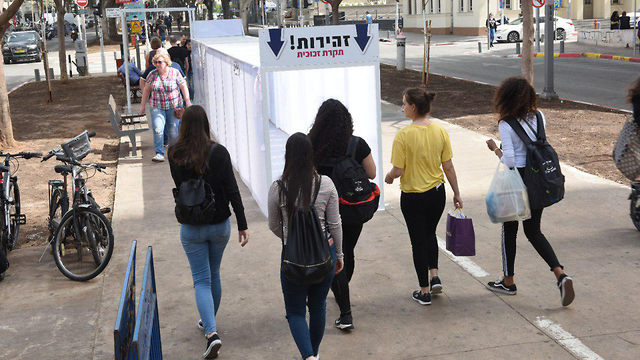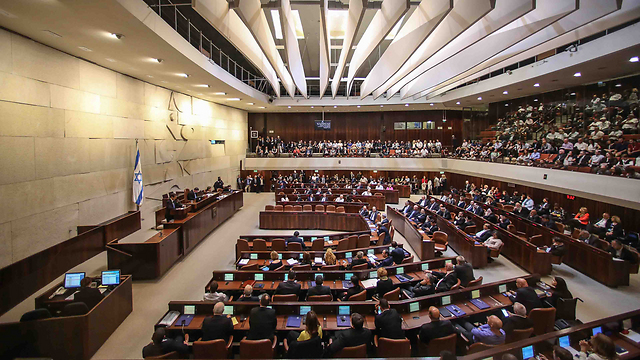Data released on the occasion of the International Women’s Day shows that women in Israel, while largely faring better than in previous years, still face a large gap in employment, wage and promotion opportunities.
A new report providing a comprehensive picture of women’s representation in Israeli society, their presence and status in different sectors, and the distribution of resources between them and men was published Thursday on the occasion of the International Women’s Day.
While the data marks a positive trend, it remains clear that while the glass ceiling has been cracked, it is definitely unbroken.

Employment and work hours
The rate of women’s participation in the labor market has increased significantly, and gaps in participation between men and women have narrowed considerably, from a gap of about 20 percent in the early 1990s to less than 9% in 2017.
Men work an average of nine hours more than women per week, though that is due to the fact women remain the primary caregivers of children—expected to pick them up from school, to be at home with them in the afternoon and to get out of work early to do so.
When paid work hours and hours of unpaid work (housework and child care) are added up, it appears women work much more than men—about 76 cumulative hours a week, compared with 64 cumulative hours for men.
Wage differentials
Recent data by the Central Bureau of Statistics (CBS) shows the average wage gap between men and women stands at 35%.
This is an increase of 3% compared with 2015. The average monthly income of a male salaried employee is NIS 11,664, while for women, that average stands at NIS 7,633.
Among those with higher education, the gap becomes even wider, reaching 39%.
Wage gaps also exist in the hi-tech sector, where young women make 7% less than young men, while women over the age of 40 make 18% less than men.

There are high wage gaps in the public sector as well, with the state as an employer creating gender wage gaps.
The 2016 data from the Ministry of Public Security, for example, indicate that the median annual wage for women was NIS 10,000 lower than that of men.
According to the median wage data, in the Israel Police, at all ranks aside from major general, women earn less than men of the same rank. In the Israel Prison Service, the situation is even worse, and wage gaps are evident at all levels.
Academia
According to data from the Council for Higher Education for the years 2015-2016, 30% of the academic staff in Israel are women, but only 17% of academic professors are women.
And at the highest level? Of nine universities in Israel, there is only one president is a woman—Prof. Rivka Carmi of Ben Gurion University.
Integration of female soldiers in the IDF
Despite the opening of many roles to women in the army and their integration into the combat roles in recent years, there are still processes that impede the integration of female soldiers into a variety of positions, both junior and senior, in the military.
Female soldiers also suffer from exclusion and sometimes from discrimination.

Today, women constitute 33% of all IDF soldiers and 36% of officers, while only 8% of all female IDF soldiers serve in combat roles.
Only two women have ever reached the rank of major general since the IDF was established.
The public sector
The number of women serving in the Knesset is rising steadily, and in the current Knesset, the 20th, it reached a record 34 Knesset members. Thus Israel rose from the 70th place in the world in regards to the proportion of women serving in parliament to 57th.
The number of female ministers in the current government is also the highest since the establishment of the state, and stands at four out of 21 (including the prime minister).
Since the establishment of the state, only a total of 17 women have served as ministers in the Israeli government. None have served as president of the state, nor was one IDF chief of staff.
Only one woman ever served as prime minister—Golda Meir, between 1969 and 1974.

The Supreme Court currently has four female justices out of 15. The record number was five justices in the previous decade.
Since the establishment of the State of Israel, 11 female justices have served in the Supreme Court, compared with 59 male judges.
In most government ministries, women are a minority of senior employees—women constitute only 27% of employees in the Ministry of Economy, 26% in the Ministry of Public Security, 18% in the Israel Land Authority, 28% in the Tax Authority and 33% in the Prime Minister’s Office.
The percentage of female directors in government offices has been on the decline in recent years, and currently stands at 36%. The peak was reached at the beginning of this decade, when it stood at 44%.
The most conspicuous decline in female representation comes from local governments, where, out of 257 heads of local authorities serving in Israel, only six are women—about 2%.
A low percentage of women is also held in other senior positions in local governments, with women constituting only 13% of all council members in Israel.
As reported by Ynetnews
